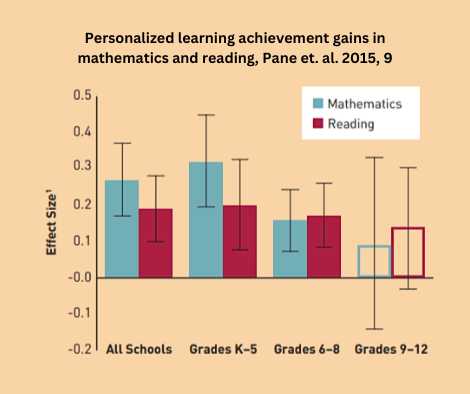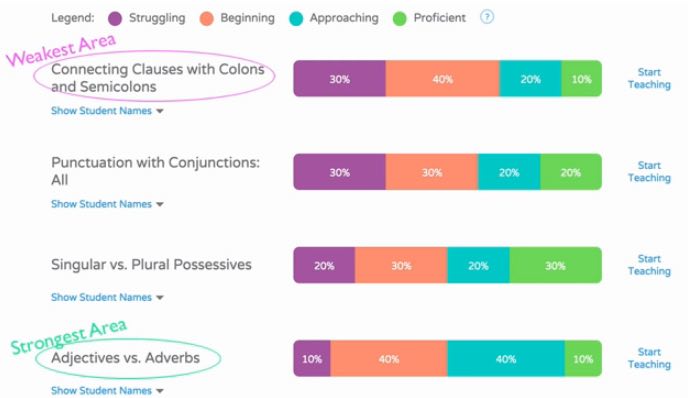
Why Your Personalized Learning Initiative Isn’t Working
What role will personalized learning play in the future of education?
Ask ten educators, and you’ll get ten answers. Heck, you’ll probably get ten different definitions for personalized learning.
To critics, personalized learning initiatives (PL) represent a dystopian nightmare: students staring at screens all day like zombies, clicking away at boring, multiple choice questions. Some progressive educators believe that personalized learning is inconsistent with the collaborative, inquiry-based educational models they prefer. While traditionalists fear the effects of screen-time and the shift away from teacher-centered instruction.
But many innovators, from overwhelmed classroom teachers to billionaire philanthropists, see the opportunity for personalized learning to address a number of critical challenges in education. From reducing teacher burnout, to increasing student ownership, and addressing long-standing inequities in education.
Early studies have found that, when implemented correctly, PL can significantly increase student achievement. More recent reports have highlighted the uneven impact of personalized learning. When implemented correctly, the gains can be astounding.
But too many districts are diving in without adequate planning or ongoing support. In these cases, PL becomes a distraction and can even negatively impact student achievement.
So what is the secret to launching a successful personalized learning program? Why do so many initiatives fail? And how can you ensure that your launch goes smoothly?
A Personalized Learning Success Story
I’m a believer in the power of personalized learning. And while I find the research to be compelling, it was my personal experience with PL that made me a convert.
I spent the first half of my teaching career as an edtech skeptic. It felt like we were always being encouraged to use technology for technology’s sake. And I had serious doubts about whether a SMARTBoard or a Moodle page could really improve my students’ learning experiences.
But all that changed in 2015, when I faced my most significant challenge as an educator. Having taught humanities for most of my career, I was asked to switch to middle school math.
At the start of the year, we completed the start-of-year diagnostic in the textbook, and every. student. failed. The class average was somewhere around 28%.
This test covered the major concepts they were supposed to have learned the prior year. And even though they weren’t ready for it, I had nowhere to turn other than the dry, procedural textbook I had inherited.
I knew my students were behind, but I had no idea what foundations were missing, let alone how to tailor instruction to each of their needs.
Fortunately, our school’s technology director showed me how I could use Khan Academy to identify and address my student’s gaps. Khan was an adaptive learning platform, meaning it would assess students’ skills and needs across grade levels. Then it would create a custom pathway targeting each students’ zone of proximal development.
The initial results blew me away, and over the next few years I developed routines and structures to get the most from Khan and ensure all of my students were engaged. I launched similar initiatives in my language arts classes using programs like Vocabulary.com and NoRedInk.
The school leadership noticed the growth in students’ standardized test scores. And I started receiving emails from parents asking why their child had ‘suddenly become so interested’ in fractions, grammar, parts-of-speech, etc.
I eventually decided to invite the parents in to see how this new personalized approach worked. One parent ended up sponsoring a program so we could train other teachers on this approach.
The 3 Most Common Personalized Learning Pitfalls
A few years later, I left the classroom to help other schools and districts launch their initiatives, and I was excited to see our partners achieving similar results from their own personalized learning initiatives.
But when I talked to other teachers and administrators, many were fed up with personalized learning. They were convinced it ‘just didn’t work,’ and most were ready to give up!
It was hard for me to square my own experiences with the horror stories I was hearing. So I decided to visit these schools to see for myself what was going on.
It soon became apparent that the schools who were struggling had not laid the groundwork for an effective initiative. But it was hard to blame them. A lot of the marketing from software companies made it seem like all you had to do was buy their product…and the software would take care of the rest.
This is why I never refer to a product as personalized learning software. The software is adaptive. It takes a teacher to personalize learning.
I noticed some consistent patterns among the schools who were struggling with personalized learning. These pitfalls are the kiss-of-death for an otherwise promising personalized learning initiative. Do any of them sound familiar?
1. Personalized Learning for Dessert
We’ve all experienced that sinking feeling when you’ve barely handed out an assignment, and a hand goes up: “I’m finished!”
Every teacher with a few years under her belt has the solution: a collection of games and enrichment activities to keep the early finishers occupied while the more methodical students complete their assignments.
But personalized learning is not a reward that students earn. It’s not a spoonful of sugar to wash away the monotony of the worksheet. In other words, it’s not dessert.
Personalized learning is an alternative to the traditional, curriculum coverage model of instruction. Providing students with time to learn at their own pace is just as important as having them all complete the same activity – perhaps even more important.
What’s more, the students who need PL the most are your struggling learners who didn’t finish the worksheet.
It’s fine (and maybe even essential) to give students fun activities after they complete their regular classwork. It’s just not personalized learning. And it won’t have the same impact.
2. Personalized Learning, Standardized Grading
The goal of traditional instruction is to ensure every student learns the same standard, at the same time. So we measure how much of the content they’ve mastered on a given day, and assign each student a percentage.
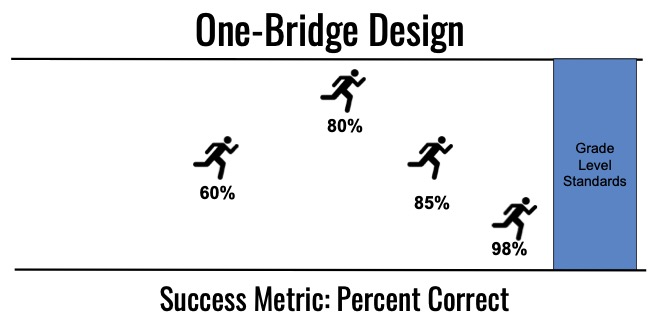
The goal of personalized learning is different. If we are attempting to meet each student where they are, it makes no sense to measure them by the same yardstick.
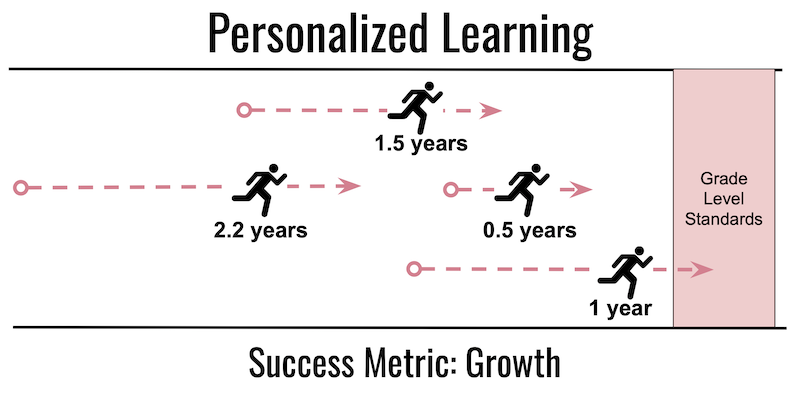
But launching a personalized learning initiative with no grades is equally unproductive.
What gets measured, gets managed. If we grade students on a unit test, but not on their personalized work, we’re sending a strong message to students, parents, and even teachers, about what’s important.
Personalized learning requires its own grading systems. Fortunately, most platforms provide reporting on the metrics that are critical to personalized learning success. But it’s up to educators to translate those metrics into something that makes sense on a report card.
For more PL tips, visit our personalized learning implementation page.
3. Personalized Learning, Depersonalized
Adaptive learning programs have the power to assess student strengths and needs, and deliver instruction customized to each.
But most programs can just as easily deliver the same lesson to a class full of students, and automatically grade their work.
The latter is a bit like strapping a rocketship to the train tracks. It will get the job done. And quickly. But it also removes the rocket’s most unique and powerful capabilities.
Many schools believe that they have implemented a personalized learning program, when they’ve merely automated the delivery and grading of assignments. And when they don’t see the expected growth in student engagement and achievement, they may blame the software, or the ‘whole concept’ of personalized learning.
Personalized Learning: 3 Keys to Success
Personalized learning has the power to address the critical challenges facing our education system.
- Giving students ownership of their learning can improve engagement and help them develop social-emotional (SEL) skills.
- Tailoring instruction to individual needs can address learning loss and ensure equitable learning experiences for underserved students and those with special needs.
- Leveraging technology can alleviate teacher workloads and introduce much-needed flexibility into school schedules.
With so much at stake, it’s critical that educators receive proper training and support around the meaning of personalized learning and the keys to successful implementation.
Don’t believe anyone who tells you that for a small monthly fee, they can engage your students and raise their test scores, with little no effort on your part.
The first step to success is accepting that it won’t be easy. But it will be worth it.
1. Create Space for Personalized Learning
Like a young seedling, your personalized learning initiative cannot thrive in the shade of a massive oak tree.
Our educational system is dominated by a Bridge 1 model of learning, whereby teachers ‘move’ students through content at a fixed pace.
Our schools are designed for a Content Coverage model of learning. Everything from grading systems, to grade levels, and bell schedules support this model.
When we introduce elements of Bridge 2 (personalized learning) into a traditional school, they can easily become subsumed into the Bridge 1 system.
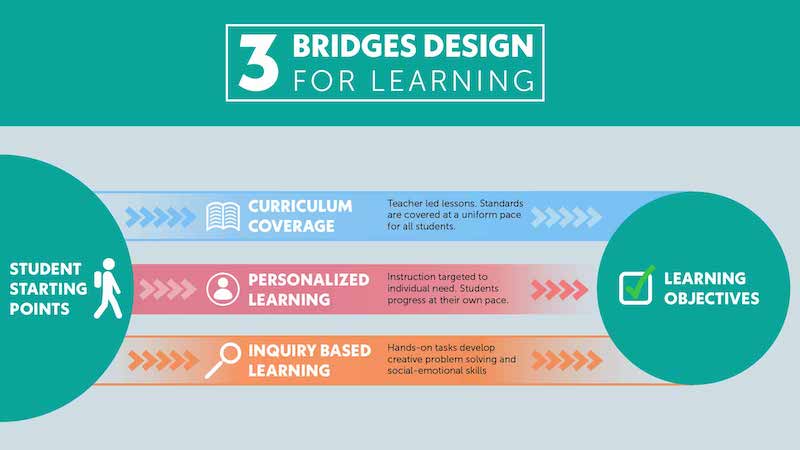
It’s natural to want to incorporate PL into our existing curriculum. And there are some small benefits to sprinkling in a bit of personalization.
But to get the real benefits, we need to put our Personalized Learning Initiative on equal footing with Content Coverage. That means setting aside consistent time in the schedule for PL. And ensuring that students’ efforts in this model are reflected in their grades.
Eventually, we can weave together our personalized and content coverage learning models. But this only works after you’ve established an independent, sustainable PL program.
The Three Bridges Design for Learning provides a framework for developing curriculum plans that balance all three bridges: content coverage, personalized learning, and inquiry-based learning.
2. Measure Productive Time on Platform
In traditional grading systems, we generally evaluate students on their percentage of correct answers.
This is a reasonable measure of success when every student is learning the same content. Correct answers mean they’ve mastered the content, and grading on this measure incentivizes them to study, work hard, and avoid careless mistakes.
But such metrics are counterproductive in a personalized environment, where we want students to make mistakes. A healthy percentage of mistakes mean that students are appropriately challenged, that they’re taking risks, and that they’re learning something new.
When students encounter PL for the first time, many will have already been conditioned to avoid mistakes. You may have already seen students attempt to work on content below their level, just to get a better score.
So we need to help them adjust to a new way to define success. And that means measuring time on platform.
Our ultimate measure of success in PL is growth. A student who starts the year on grade level 2.0 and finishes on grade level 3.7 has grown 1.7 grade levels in one year – 170% of the expectation!
But we will never achieve these growth scores if students don’t engage with the platform. Grading students on minutes/week is incredibly effective when you’re getting your initiative going. Or when you’re fixing an initiative that never took off.
I suggest expecting students to achieve around ¾ productivity. So if I want students to get 60 minutes on-platform per week, I give them 1 hour and 20 minutes of class time.
Their weekly personalized learning grade is their total minutes divided by 60. A student who completes 60 minutes, earns a 100% for the week. One who gets 45 minutes earns a 75%.
Provide students their individual scores each week, celebrate milestones with the class, and watch their engagement and growth soar.
3. Let the Software Adapt
Adaptive software has the power to identify student strengths and needs, provide targeted instruction, and report the results back to teachers and school leaders. But these same programs also allow us to manually assign work to our students.
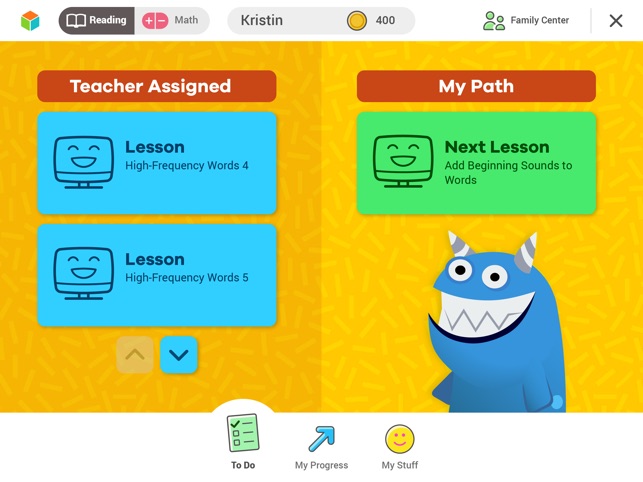
As a teacher, I loved how the adaptive pathways (such as iReady’s MyPath and IXL’s Continuous Diagnostic) saved me time. Instead of grading and hounding students for missing assignments, I could interact with my students in more meaningful ways. We would discuss what they were struggling with and what they wanted to achieve.
But some educators feel these automations take them out of the loop. They like learning about their students by grading their work. And if each student is completing a different assignment, they want to be the one assigning it.
But personalized learning cannot work when every learning experience passes through the teacher. There are too many questions to be assessed, too many activities to be assigned, and too many decisions to make.
It reminds me of old movies, where operators asked who you wanted to call, and plugged-in a wire to connect the parties. That was fine when they were connecting a few calls per hour. But nowadays, they’d be overwhelmed, and everyone would be waiting hours to place each call.
The irony of it all is that ¾ of teachers report ‘frequent job-related stress’. 2/3 of teachers report feeling ‘burnt-out.’
It’s like we’ve been conditioned to feel that we need to sacrifice ourselves to serve our students. It’s simply not true. Sometimes the best way that we can help our students is by making our job easier.
We just need to give up control over the minutiae, leverage our resources, and shift into an even more purposeful role.
Personalized Learning Works
When personalized learning is implemented properly, it’s the most powerful way we can give students ownership of their learning.
I’ve seen students master 2-3 years of content in a single school year. And I’ve seen the looks on faces of students who have struggled for years, and are finally finding success in a difficult content area.
But don’t make the mistake of rushing your initiative. Or believing that software will do it all for you. That’s a recipe for frustration and failure.
The steps described in this article are a great way to launch your initiative. But if you’d like more support, we’re here for you.
We’ll can help you determine if personalized learning is a good fit for your district, your school, or your classroom. And we’ll provide the guidance and resources that will let you bypass the pitfalls that derail so many personalized learning initiatives.
The first step is to schedule your free consultation. We look forward to partnering with you for a successful personalized learning launch.
About the Author

Jeff Lisciandrello is the founder of Room to Discover and an education consultant specializing in student-centered learning. His 3-Bridges Design for Learning helps schools explore innovative practices within traditional settings. He enjoys helping educators embrace inquiry-based and personalized approaches to instruction. You can connect with him via Twitter @EdTechJeff

